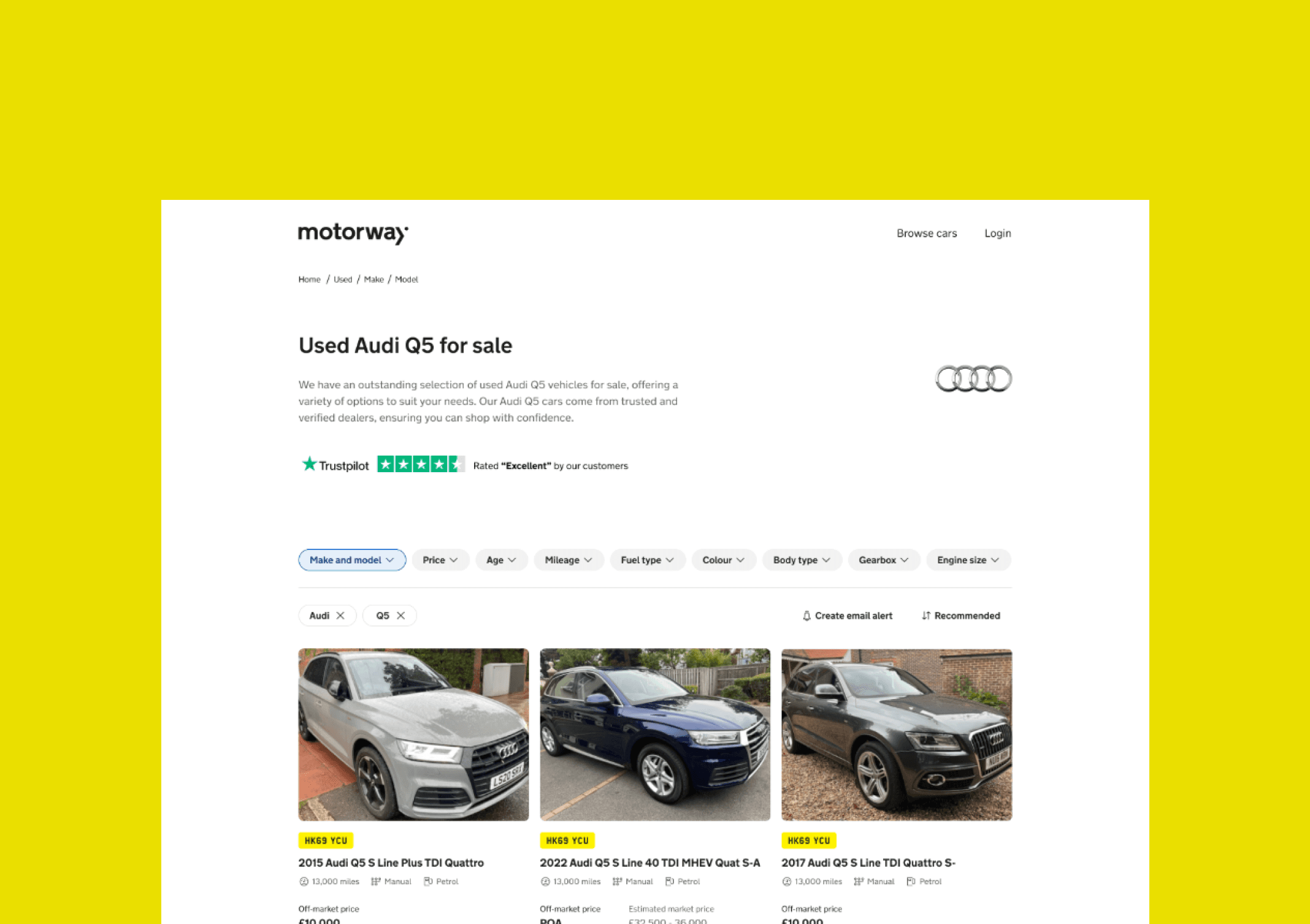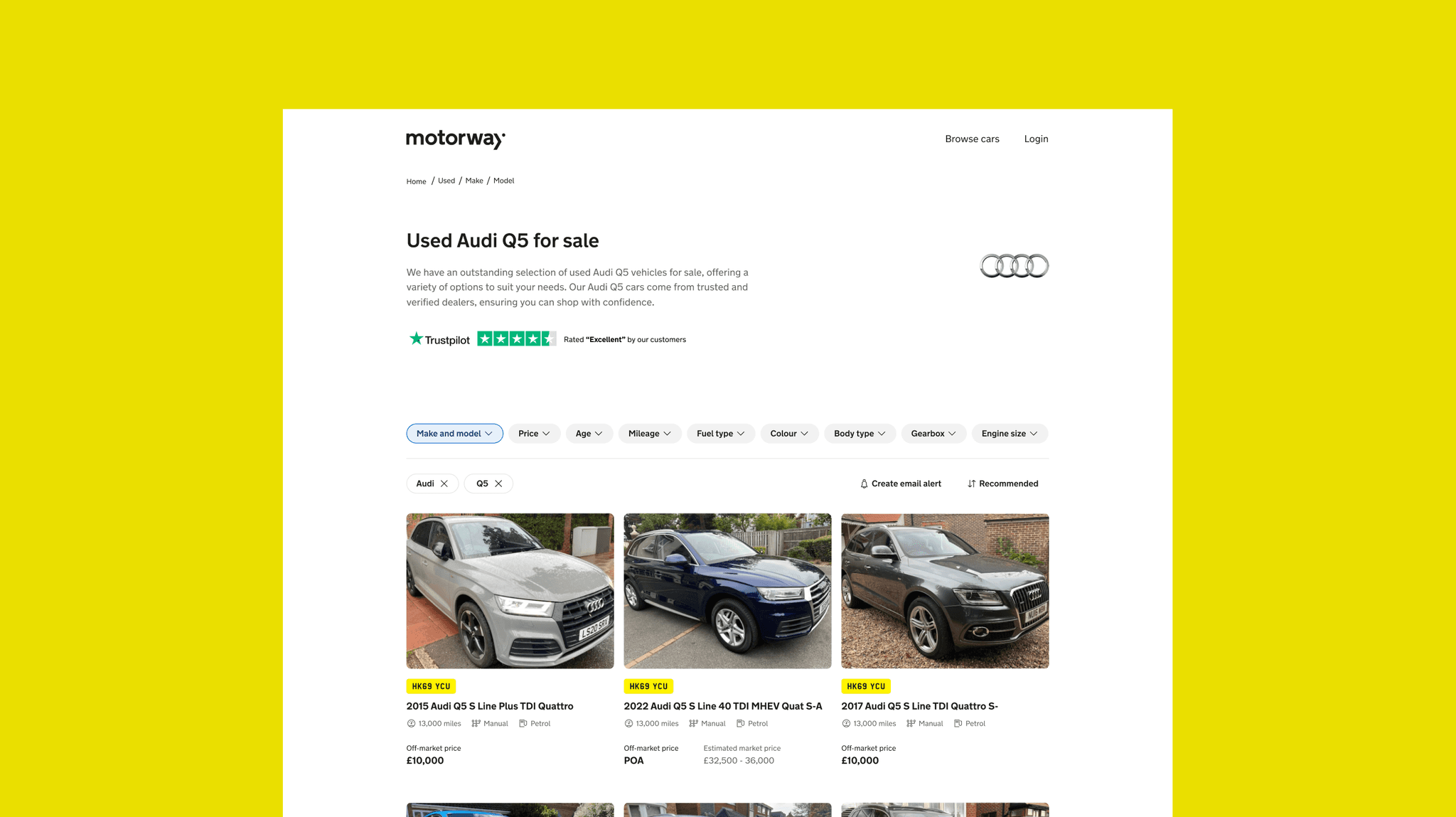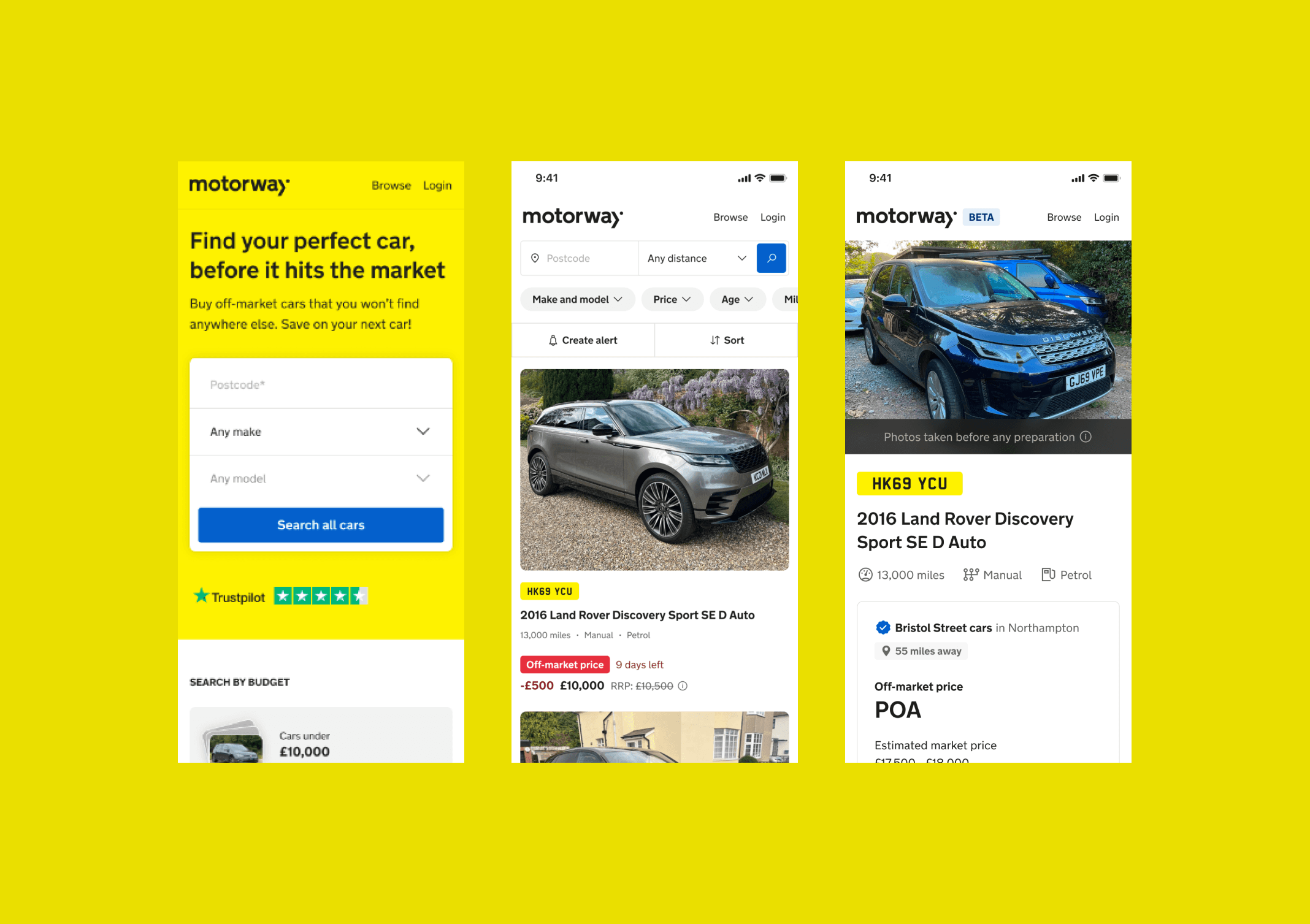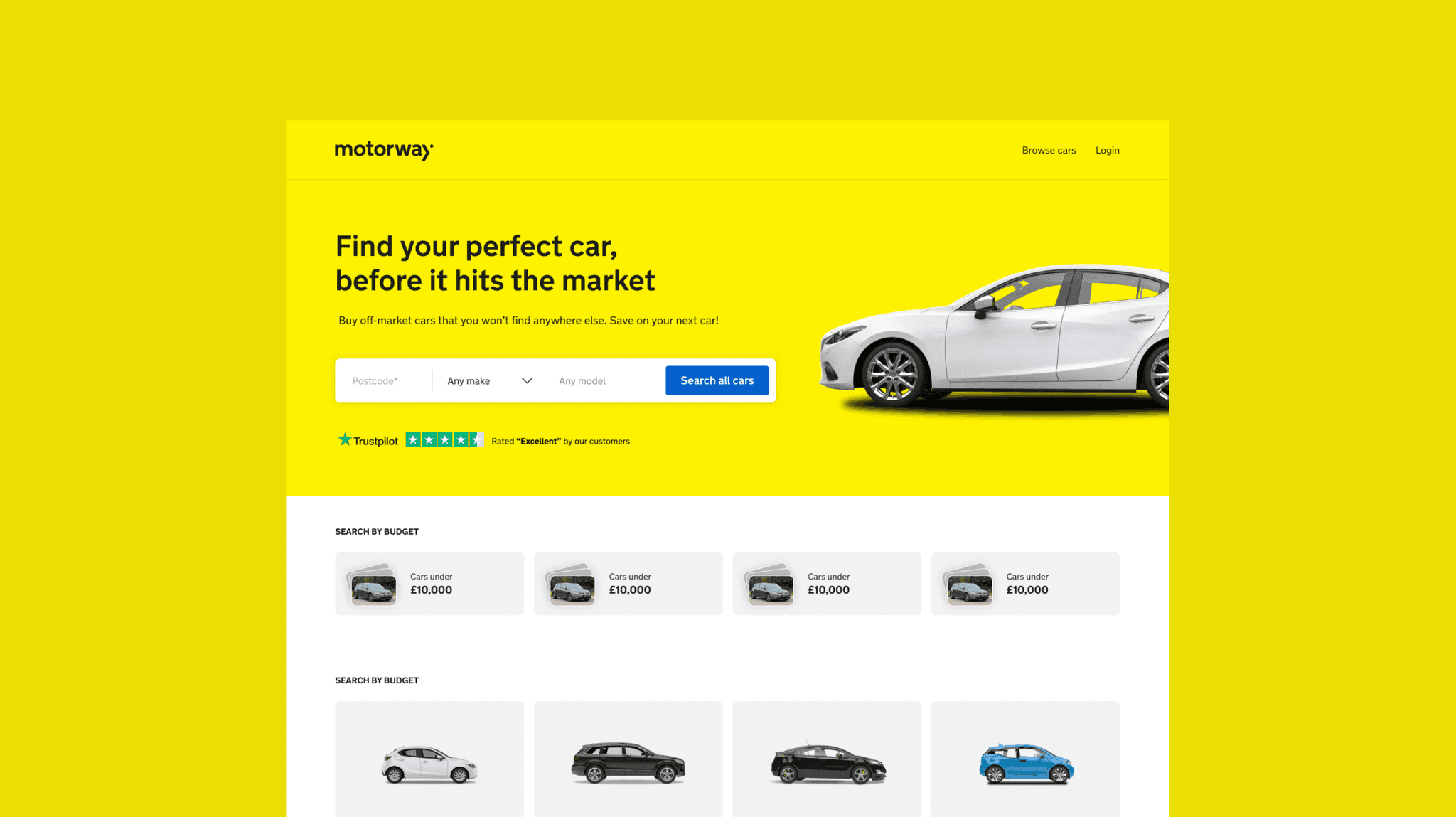Building new opportunities
at
In early 2024, Motorway launched a new strategic initiative: Instant Match. This feature allows us to connect dealers with prospective private buyers for the cars they’ve just acquired — essentially flipping the seller journey into a buy-side opportunity.
I joined the project shortly after initial exploration, working closely with our principal designer to shape the early UX and experiment with new design patterns. My focus was to evaluate the viability of the product experience and align it with the needs of a new user base: people actively searching for their next car.
This project was a bold step for Motorway — blending our core platform with Total Car Check data to quickly match intent and inventory. It later evolved into its own standalone experience within Motorway Retail.
To comply with my non-disclosure agreement, I have omitted and obfuscated confidential information in this case study. All information in this case study is my own and does not necessarily reflect the views & facts of the company.
Overview
I was brought into this project at Motorway to identify and test new opportunities to improve lead quality while enhancing the overall user experience. The goal was twofold: increase the volume of leads generated and raise their value, helping the platform attract more serious buyers and better support dealer outcomes. My work focused on designing experiments that balanced commercial goals with user needs, ensuring every lead was not only higher intent but easier to convert.
Client
Motorway
Timescale
Jul 24 - Sep 24
Role
Product Designer, Workshop facilitation, Stakeholder management, Rapid prototyping, User research, Visual design,
The challenge 1
Increasing search result relevance
One key initiative was introducing a required postcode entry at the start of the user journey. This step helped us gather accurate location information early on, allowing us to show users vehicles that were more relevant to their area. We knew this could add a bit of friction to an otherwise smooth experience, but the benefit was that users would see closer, more affordable cars instead of just general recommendations from Motorway. After launch, we were pleased to see no significant drop in vehicle views, which was reassuring and aligned with existing user behaviors, so this adjustment felt natural for users.
Challenge 2
Capturing high intent
Another area I focused on was testing the idea of allowing direct dealer contact earlier in the sales process. Initially, we let users inquire about any vehicle, but this approach led to a lot of low-quality leads from buyers who often weren’t serious. To address this, we created a process that encouraged higher-intent buyers by requiring them to call to show interest. While the results didn’t fully meet our expectations, we weren’t completely surprised since this change significantly limited users’ ability to make contact. It was a calculated risk we were prepared to take in order to capture data and get a realistic view of potential results.

Challenge 3
Selling vehicles earlier
To improve user experience and increase leads, we saw an opportunity to expand the browsable inventory by showing Motorway vehicles earlier in the process. This approach would help dealers sell faster and offer buyers more options. However, we knew some buyers might find this new vehicle stage unclear. Our goal was to make it easy for users to understand the benefit of browsing these early-stage vehicles without fixed prices, so they’d feel more in control of their search. Our final concept used clear, simple visuals and messaging to communicate this value.

Challenge 4
SEO landing pages





